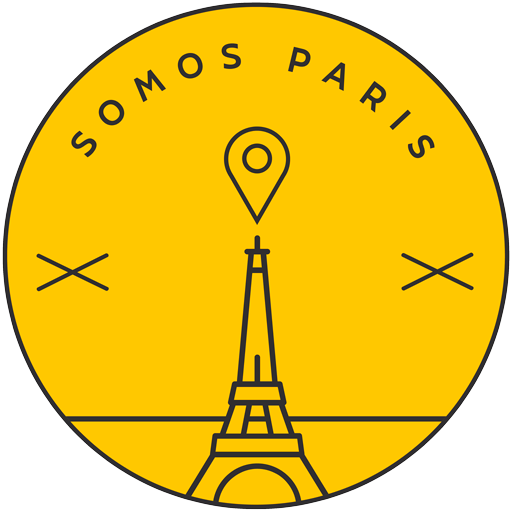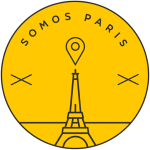Alexander III Bridge in Paris is one of the most emblematic, romantic, and beautiful landmarks that can be visited in the city, as well as a perfect symbol for the elegant Belle Époque and the old French-Russian alliance. Tag along with us so as to get to know its history and its architecture, and everything there is to be seen and done in its surroundings, where to stay and where to eat!
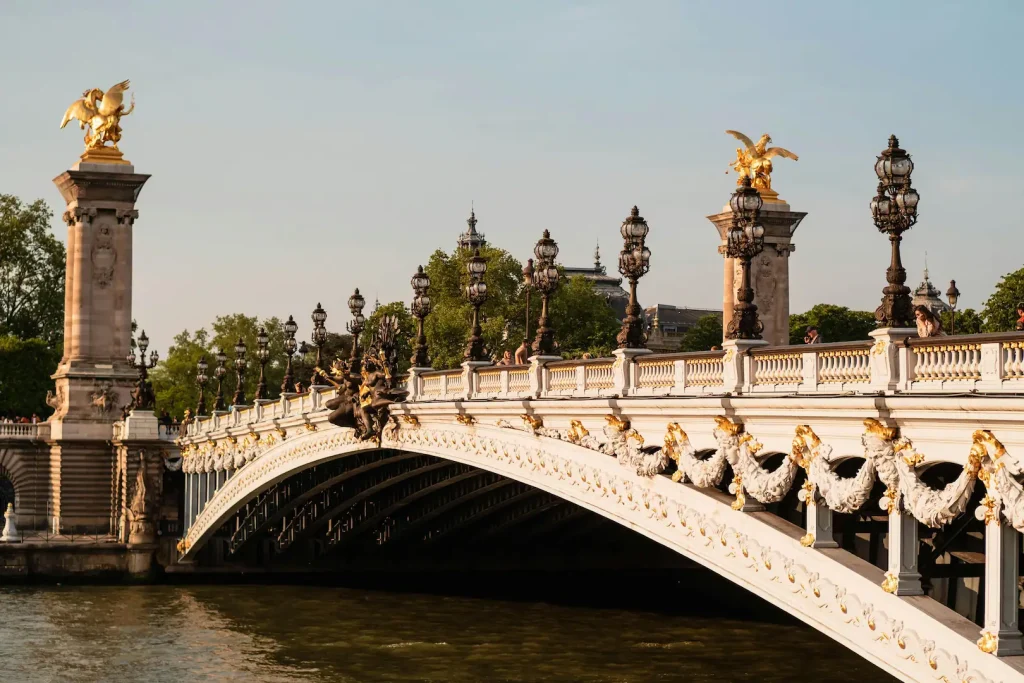
History of the Alexander III Bridge
The history of the Alexander III Bridge is closely linked both with the 1900 Universal Exhibition as well as the good diplomatic ties that France and Russia held back in those times, which actually ushered its creation. Let us take a closer look at its history!
Origins and construction
The building of Alexander III Bridge got under way in 1896 with the aim of replacing a preceding suspended, metal bridge which had existed in that very same spot. But, above everything else, what motivated its construction was the celebration of the contemporary French-Russian alliance of 1892, and being devoted to become one of the protagonists of the Universal Exhibition to be held in 1900.
The cornerstone of its foundation was laid in place by tsar Nicholas II himself (son of tsar Alexander III, whose name was bestowed upon the bridge) and tsarina Alexandra Feodorovna Romanova on October 7th, 1896, in an event which was also attended by French president Félix Faure. Just a few months later, the Trinity bridge was inaugurated in Saint Petersburg (Russia) as a twin structure to the one in Paris.
Inauguration and Symbolism
The inauguration of the Alexander III Bridge took place on April 14th, 1900, by the hand of French president Émile Loubet in a ceremony that showcased the close-knit diplomatic ties linking France and Russia ever since the alliance signed in 1892. Even though tsar Nicholas II was not able to attend such an occasion, a hefty mission from the Russian Empire was indeed present.
The bridge would become a pivotal piece of the Universal Exhibition held in that year, given that it linked both sides of the Seine devoted to such an event and, more specifically, Les Invalides and the Grand Palais and the Petite Palais, their main seats.
Architects and Engineers
The main architects of the Alexandre III Bridge were Joseph Cassien-Bernard, a pupil of Charles Garnier, and his collaborator Gaston Cousin, who made for a dream team in order to give birth to one of the most beautiful pieces of Belle Époque architecture.
As for the engineers in charge of the structure, they were Jean Résal, a specialist in metal bridges, and his co-engineer Amédée d’Alby, who succeeded in preventing the bridge from blocking the view of Les Invalides with its sheer height, which was paramount for Parisian aesthetics.
Architecture and Main Traits
The architecture of the Alexander III Bridge is an example of the finest Art Nouveau and Modernism, and the artistic, cultural, and symbolic language of the Belle Époque. Let us have a look at it in greater detail!
Architectural Style
The architectural style of the Alexander III Bridge is typical of Art Nouveau architecture and the Beaux Arts, or French Academicism (called in that way because it follows the conventions of the High Academy of Fine Arts of Paris). Among its most prominent features, its elegant gilded decorations and its ornamental details, typical of that era, can be mentioned, since they embody the diplomatic union between France and Russia.
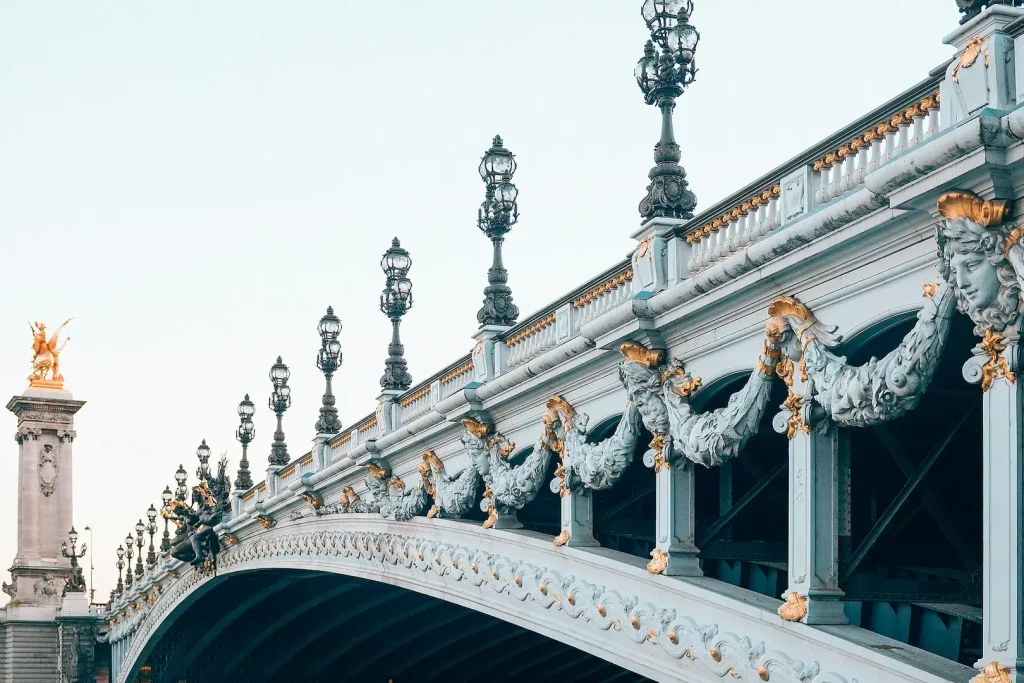
Dimensions and Structure
As for the dimensions of Alexander III Bridge, it has an overall length of one hundred and sixty meters (five hundred and twenty five feet), whereas its breadth barely reaches forty meters (one hundred and thirty feet), conferring an elegant and stylized shape to it.
The bridge is noteworthy for its single metal arch, which is one hundred and nine meters (roughly three hundred and sixty feet) long, and it is regarded as a technical wonder of its time. This was also one of the first pre-made structures in the world, given that all of its parts were smelted and forged in a given location, and then transported to Paris and placed directly upon the Seine by means of a gigantic crane.
Sculptures and Ornaments
The sculptures of the Alexander III Bridge are part of an extensive and complex collection comprising several levels of the bridge. Beneath the ledge, in order to balance the architectural ensemble, beautiful garlands with seashells and seaweeds were placed. Both ends of the bridge are decorated with four shrine (or wayside) crosses, crowned by gilded brass statues of Pegasus, and sculptures depicting allegories of France’s history at their feet.
At last, poignantly beautiful, allegorical pieces of nymphs and cherubs, as a symbolic depiction of the rivers Seine and Neva ornate its handrails, along with thirty two ornamental lamp posts of exquisite manufacture.
Such a wondrous view, both back then and also nowadays!
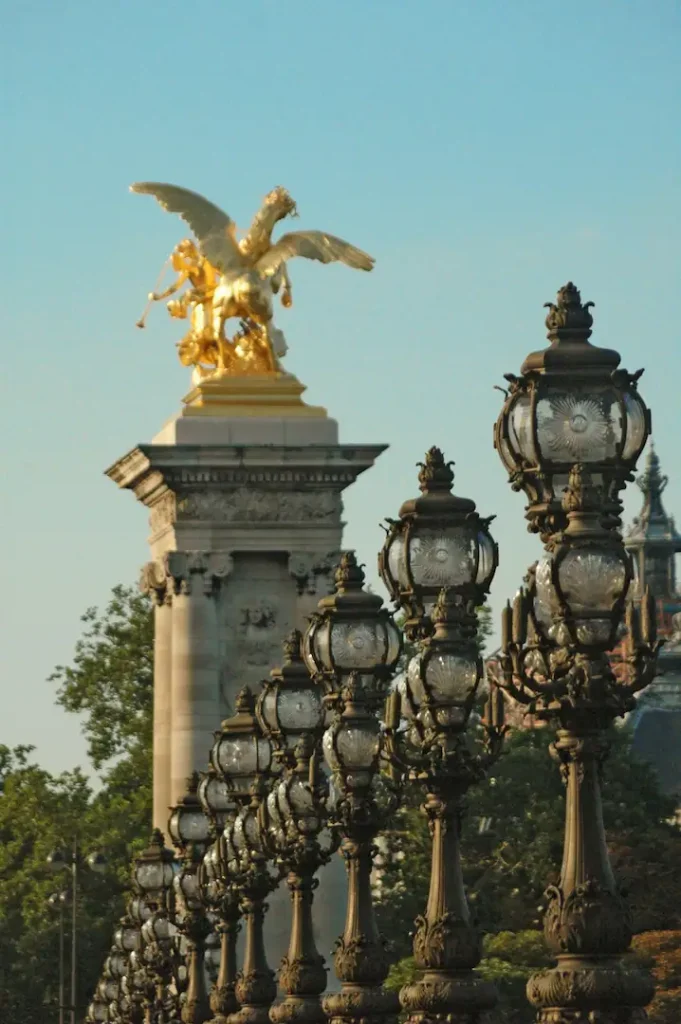
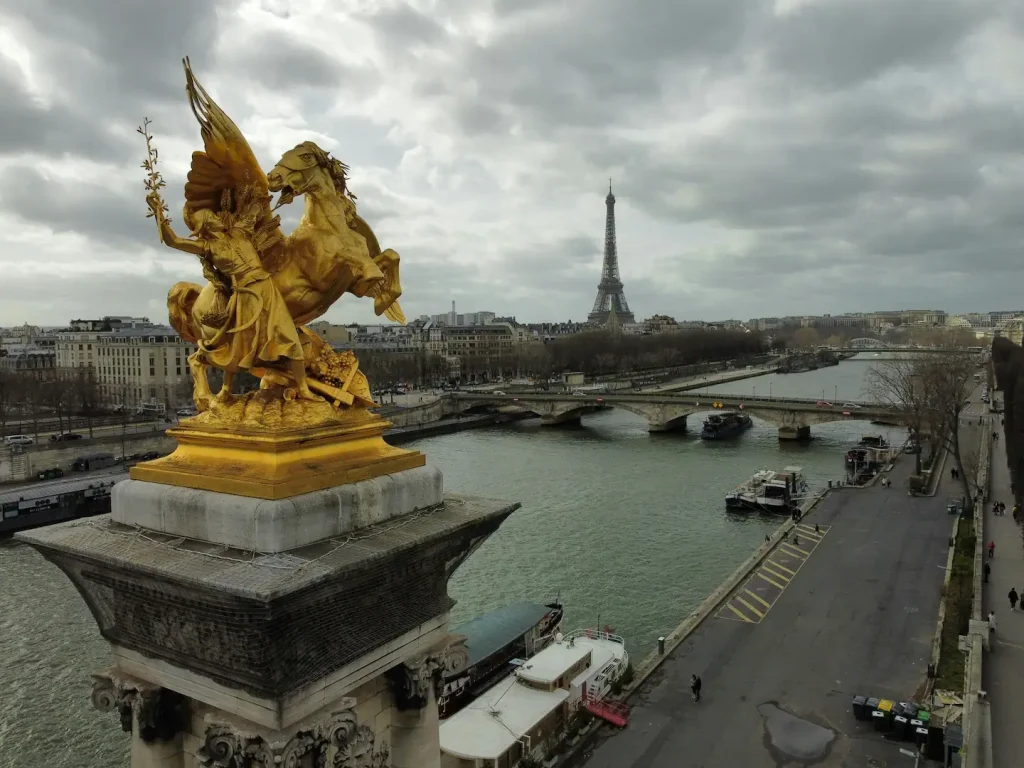
What to see near Alexander III Bridge
Should you be looking for landmarks to see close to the Alexander III Bridge, tag along with us, because there are several interesting attractions in its surroundings that you cannot miss out on.
Nearby Monuments
The closest monuments to the Alexander III Bridge that you should visit are as follows:
- Grand Palais and Petit Palais: placed in the Champs Elysées, the Grand Palais and the Petit Palais are two of the main venues which were built during the late 1800s in order to host the 1900 Universal Exhibition. Back in the day, both of them hosted countless art exhibitions and related events. Nowadays, the Petit Palais is a Fine Arts museum, free of charge, whereas the Grand Palais serves as a multi-purpose cultural venue. Along with the Alexander III Bridge, they make up an unmissable monumental ensemble portraying the Beaux Arts!
- The Invalids (Les Invalides): in this architectural complex dating back to the late 1600s, which once hosted retired military officers, the burial places of Napoleon Bonaparte, his son Napoleon II, and his brother, Joseph I of Spain, among others, can be found. The resting places are nestled in the Church of Saint Louis of the Invalids, and both of them are open to be visited, so do not miss out on it!
- Champs Élysées Avenue: this avenue, one of the main ones in Paris, runs from the Place de la Concorde all the way to the Charles de Gaulle square and the imposing Arc de Triomphe, and it is yet another one of those spots in the city that you must explore.
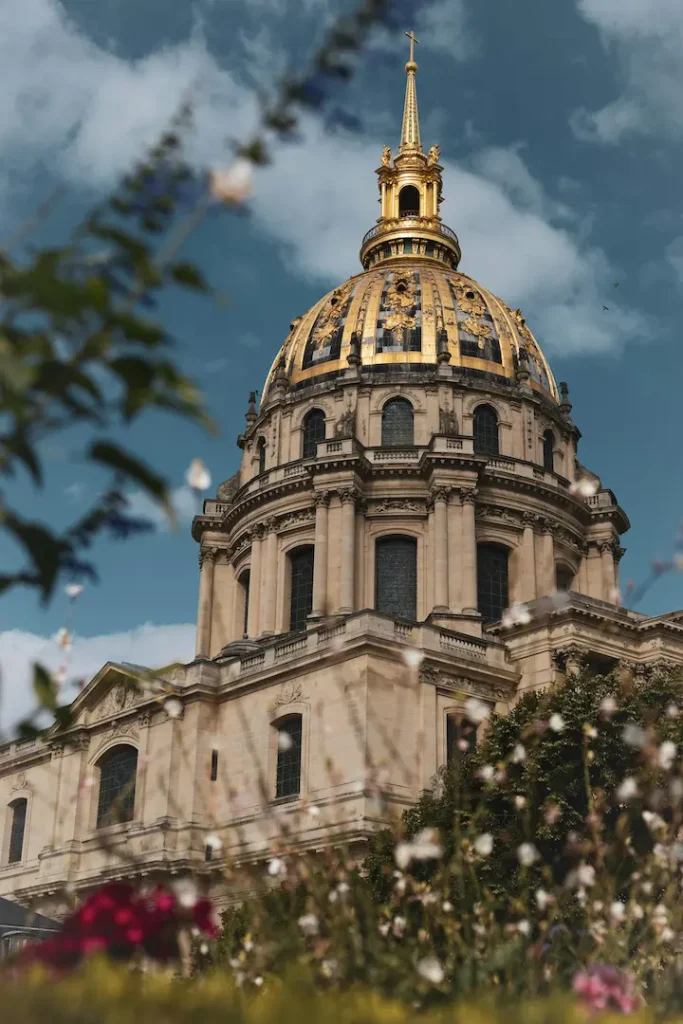
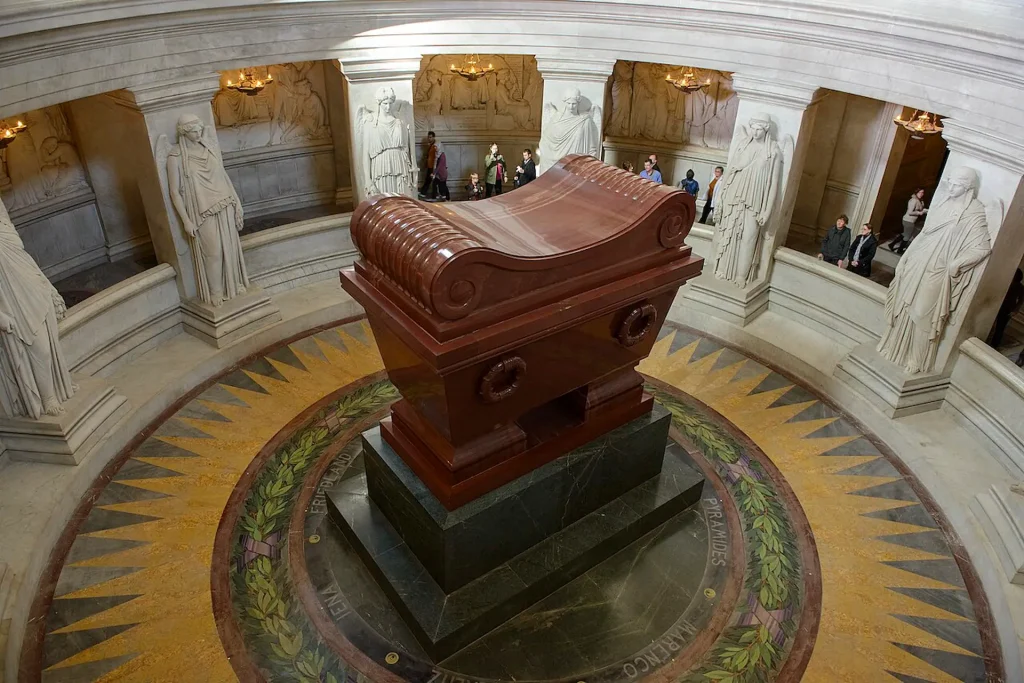
Nearby Museums
There are some museums next to the Alexander III Bridge that you should not miss out on:
- Petit Palais (Fine Arts Museum): as mentioned before, the Petit Palais is nowadays a wonderful Fine Arts museum which is free of charge, so do not miss out on the chance to drop by it in order to discover its permanent collection. It is open everyday except on Mondays.
- Army Museum (Hôtel des Invalides): besides Napoleon’s tomb, you will be able to visit the most extensive military museum at the Les Invalides ensemble, full of odd contraptions and relevant documents of France’s history. It is open everyday.
- Musée Rodin: placed next to Les Invalides, the Rodin Museum is a must for sculpture lovers in particular, and art buffs in general. Placed in Auguste Rodin’s former birth house, an elegant mansion dating back to the 1700s, it hosts some of his most famous works, such as The Kiss or The Thinker. It is open everyday except on Mondays, and you can combine your entrance ticket with other visits such as the Orsay Museum.
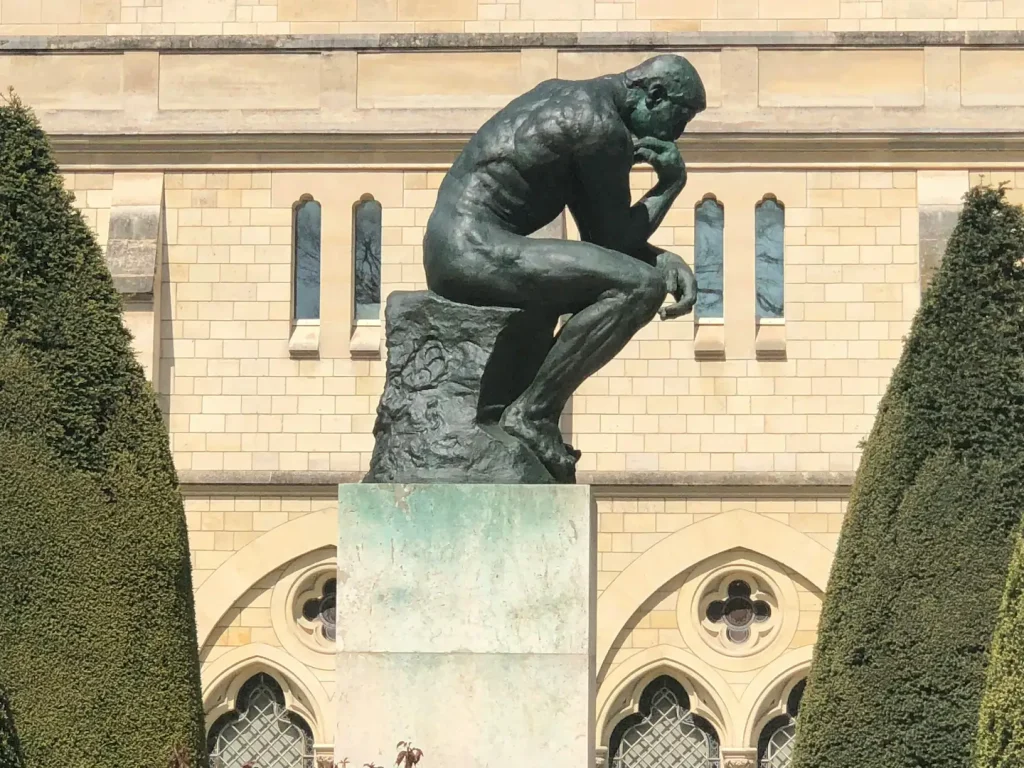
Fun Facts and Trivia
And now, buckle up for some lesser-known facts and trivia pertaining to the Alexander III Bridge!
The Bridge in Cinema and Pop Culture
As a frequent filming location for movies and TV series owing to its spellbinding location beside the Seine, the Alexander III Bridge has been the lead actor in some of the finest scenes in contemporary cinema. It is featured in films such as “Midnight in Paris” (2011), “Me Before You” (2016), “A Very Long Engagement” (2004), “Ronin” (1998), and even in animation pictures such as “Anastasia” (1997), whose final act precisely takes place in the bridge.
You may also have seen it in TV shows such as “Emily in Paris” (2020), and even in music videos as popular as Adele’s “Someone Like You” (2011). The Alexander III Bridge is a veritable pop culture icon!
Events and Celebrations
The Alexander III Bridge has also borne witness to important events and historical and contemporary celebrations, the most recent one of them being the 2024 Summer Olympics in Paris, in which this location hosted a number of sporting events. It has also served as the lavish venue for fashion shows for brands such as Dior or Chanel, and it is the preferred spot for Parisians to hold their book fairs!

Tips to Visit the Alexander III Bridge
Here are some important tips to visit Alexander III Bridge!
How to Reach It
The Alexander III Bridge can be reached from elsewhere in Paris, very easily, by metro, namely by means of lines 8 and 13 (Invalides station), or lines 1 and 13 (Champs-Élysées Clemenceau station). You can also do so by means of city bus lines 28, 63, 72, and 83.
Should you walk, you can comfortably reach the bridge from places such as the Tuileries Garden, the Place de la Concorde, or the Champs Élysées.
Best Time to Visit It
The best time to visit the Alexander III Bridge is undoubtedly at dusk, an absolutely magical moment with extraordinary lighting and beautiful views of the city. However, should you seek to enjoy it relatively by yourself, or at least without the crowds, we suggest that you go there first thing in the morning.
Tips for Photographers
Taking pictures of the Alexander III Bridge is one of the most popular activities among those who love such an art, given that this monument is full of details and traits that change depending on the time of the day or the weather. The best angles to portray this landmark are from the banks of the Seine, with a view towards the Eiffel Tower or Les Invalides, and the best moment to do so is at dusk, when it is not dark yet but the lights in the bridge are already on.
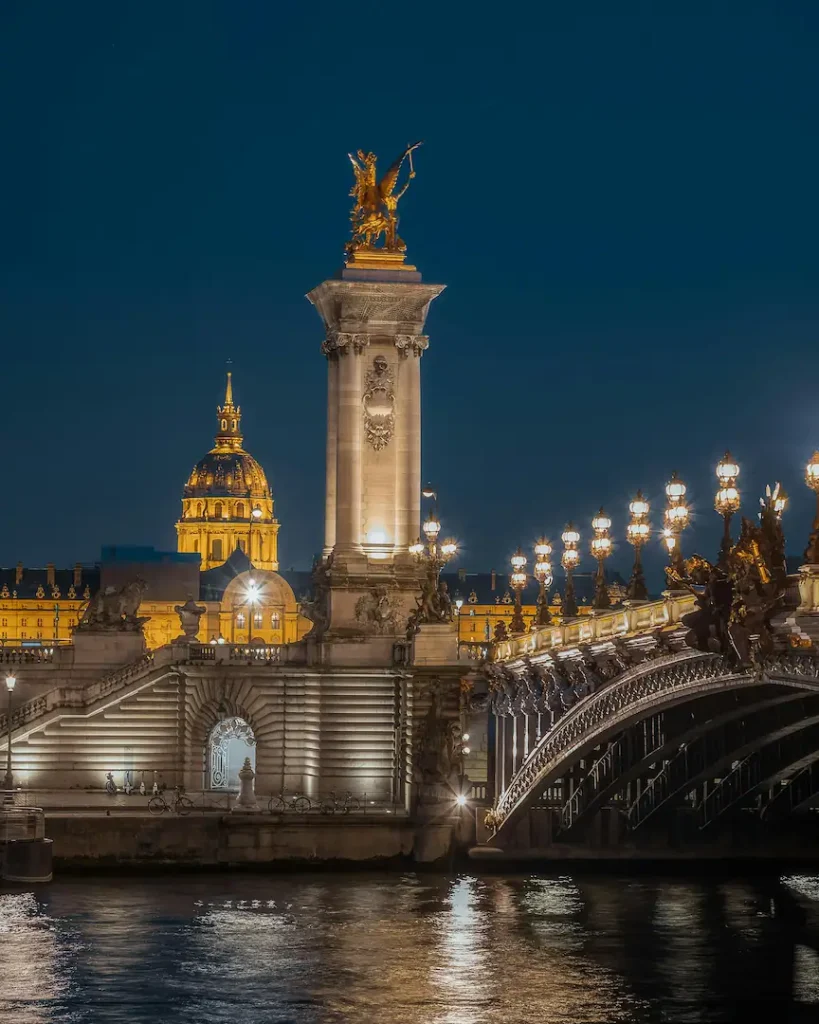
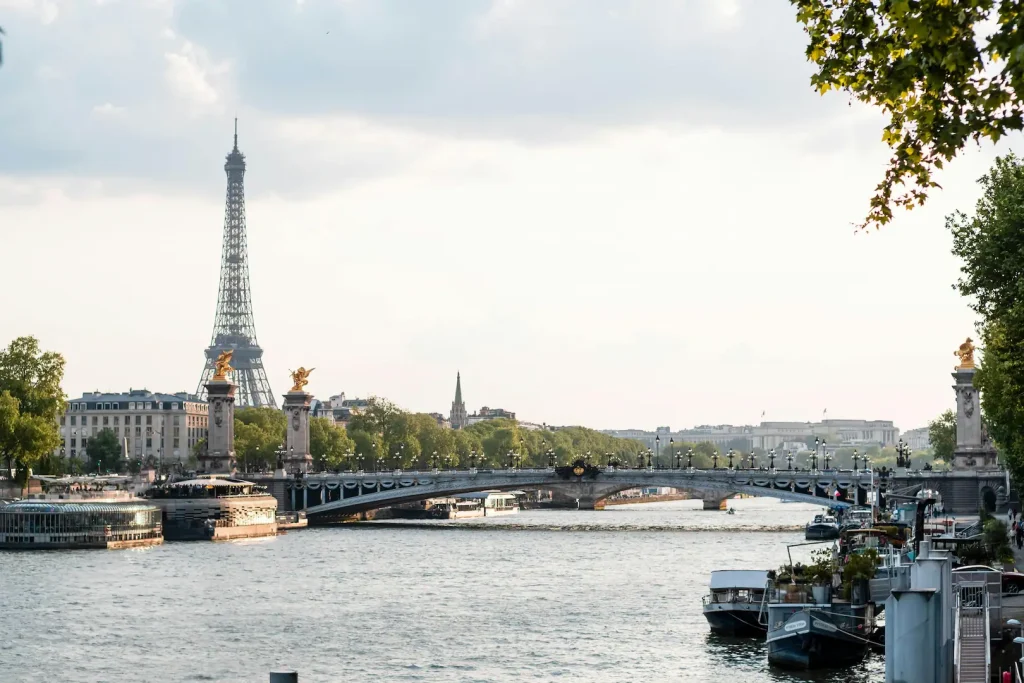
Recommended Accommodation Close to the Alexander III Bridge
Here follows a few recommended lodging options for different budgets and preferences near Alexander III Bridge!
Exclusive hotels close to the Alexander III Bridge
Boutique and affordable hotels close to the Alexander III Bridge
Where to eat nearby Alexander III Bridge
Should you be on the lookout for fine cuisine recommendations next to the Alexander III Bridge, here are some of the best restaurants and cafés.
Gourmet restaurants with noteworthy foodie experiences
If you wish to relish gourmet restaurants near the Alexander III Bridge, do not miss out on a visit to the three-Michelin-star restaurant Alléno Paris au Pavillon Ledoyen, where chef Yannick Alléno offers high French cuisine (its twin venue, the Pavyllon, features more informal options). You also need to try the delights at Le Gabriel, the restaurant of the Hotel La Reserve, or those at Le Clarence, both of which boast two Michelin stars.
Cafés and bistros close to the Alexander III Bridge
If it is bistros and cafés for a light meal you are looking for, or to have a coffee with a view on the Seine, you ought to go to venues such as Café de l’Alma, Angelina Paris, Le Petit Cler or the Café des Ministères.
Discover Paris like never before with our amazing Free Tours!
Explore the City of Light with expert guides and immerse yourself in its history, art, and legends. From its iconic monuments to its most bohemian and mysterious neighborhoods, we have the perfect tour for you.
Frequently Asked Questions (FAQs)
The Alexander III Bridge was erected in order to pay homage to the French-Russian alliance of 1892, and also to be a hub for the 1900 Universal Exhibition in Paris.
The Alexander III Bridge can be reached by metro (lines 1, 8 and 13 – Invalides and Champs-Élysées Clemenceau stations), by buses 28, 63, 72, and 83, or also on foot from places such as the Champs-Élysées or the Tuileries.
The best time to visit Alexander III Bridge uncrowded is at dawn and, in order to take pictures, at dusk.
Indeed, the visit to the Alexander III Bridge is free of charge.
